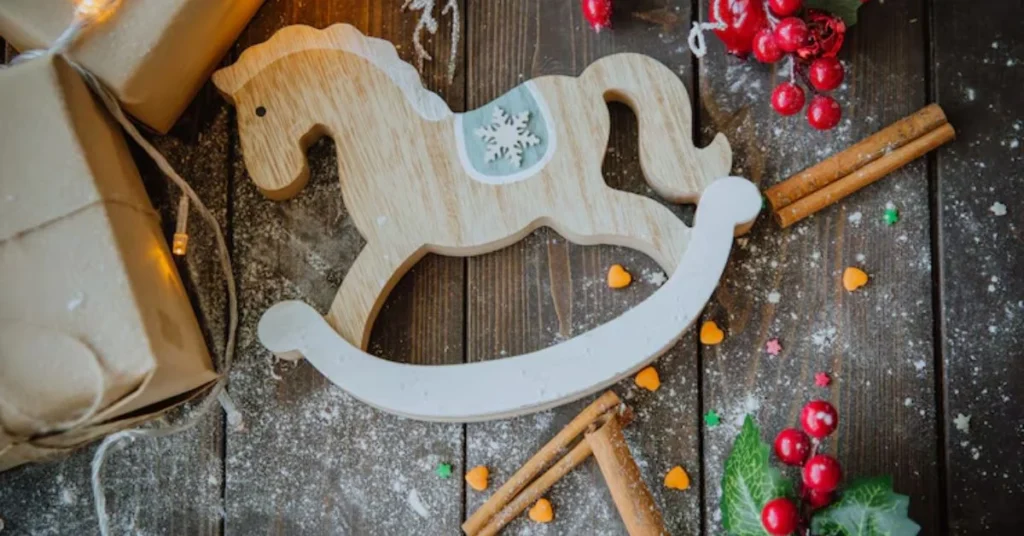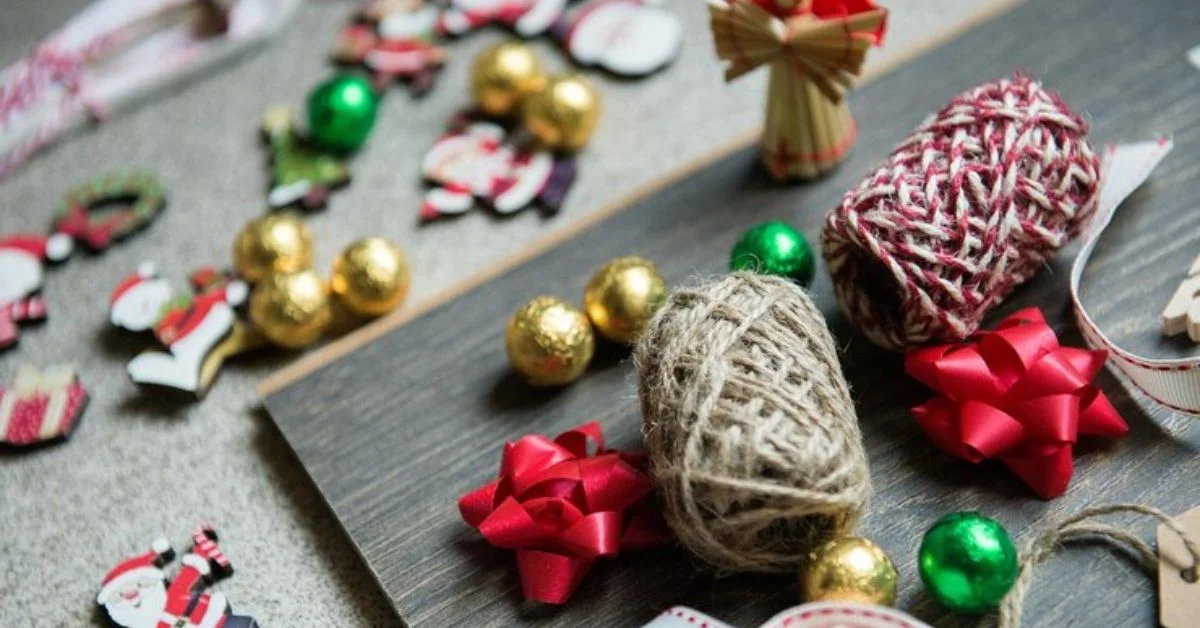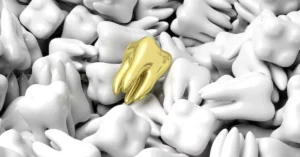As the holiday season approaches, homes fill with the familiar warmth of tradition—twinkling lights, evergreen trees, and cherished keepsakes unwrapped from storage. Among these seasonal staples, wooden Christmas ornaments occupy a distinct place, blending the nostalgic with the timeless, and the handcrafted with the meaningful.
Whether delicately hand-carved or whimsically painted by children, wooden ornaments are more than mere decorations. They carry stories, symbolize values, and offer a sustainable alternative in a world of mass-produced plastic. This article dives deep into the history, cultural significance, craftsmanship, and current trends of wooden Christmas ornaments, guiding readers through their revival in modern homes and markets.
A Tradition Rooted in History
Wooden Christmas ornaments are far from a new phenomenon. Their origin dates back centuries to Germany’s Erzgebirge region, known for its rich woodworking traditions. In the 17th century, German artisans began crafting small wooden toys, figurines, and decorations for the home and church during the festive season.
These items, often depicting angels, stars, nativity scenes, and animals, became symbolic of family heritage and craftsmanship. Immigrant families carried these traditions to the United States and other parts of Europe, where wooden ornaments began appearing on Christmas trees alongside candles, fruits, and paper decorations.
Despite competition from glass baubles (which also originated in Germany), wooden ornaments maintained popularity for their durability, charm, and cultural ties.
Why Wooden Ornaments Are Resurfacing Today
In a world increasingly dominated by synthetic materials and fast fashion, there’s a growing appetite for authenticity and sustainability. Wooden Christmas ornaments meet this demand with their:
1. Eco-Friendly Materials
Most wooden ornaments are made from sustainably harvested timber like birch, maple, or pine. These materials are biodegradable, non-toxic, and long-lasting.
2. Handmade Appeal
Each wooden piece is often hand-carved, hand-painted, or laser-etched—imbuing it with a unique character. Unlike factory-made items, no two are exactly alike.
3. Emotional Resonance
Wooden ornaments are often passed down through generations. They become heirlooms, carrying emotional weight and stories from holidays past.
4. Modern Rustic Aesthetic
The Scandinavian and farmhouse design movements have brought rustic and minimalist aesthetics to the forefront. Wooden ornaments, with their natural textures and neutral tones, fit seamlessly into these styles.
The Craftsmanship Behind Wooden Christmas Ornaments
At the heart of every wooden ornament is a process rooted in care, patience, and tradition. Here’s a closer look at how they’re made:
1. Wood Selection
Artisans typically use softwoods for carving (like basswood or pine) and hardwoods (like beech or walnut) for structural integrity. Eco-conscious creators prioritize FSC-certified or reclaimed wood.
2. Carving and Shaping
The base shape is either:
- Hand-carved using chisels and knives, ideal for figurines and traditional pieces, or
- Laser-cut for intricate designs and repeatable patterns.
3. Sanding and Smoothing
After shaping, each ornament is meticulously sanded to ensure smooth edges, safe for children and durable for long-term use.
4. Decoration
This may include:
- Painting in festive colors using water-based paints
- Wood burning (pyrography) to etch fine details
- Staining for a natural finish
- Waxing or oiling to preserve the wood
5. Stringing and Packaging
Most wooden ornaments are strung with twine, ribbon, or jute, enhancing their rustic charm. Many artisans also craft reusable packaging made of linen or cardboard.
Themes and Styles: From Folk to Modern
Wooden Christmas ornaments come in a wide range of themes and aesthetics, from traditional to contemporary:
1. Traditional European Folk Art
- Nutcrackers, angels, rocking horses
- Often brightly painted with floral motifs
- Popular in markets like Nuremberg or Salzburg
2. Scandinavian Minimalism
- Clean lines, geometric shapes
- Natural wood tones or simple whites and reds
- Inspired by hygge and lagom design principles
3. Rustic Farmhouse
- Barn stars, reindeer, sleds
- Distressed finishes and muted tones
- Popular with DIY crafters and Etsy sellers
4. Personalized Ornaments
- Names, dates, or family initials
- Ideal for baby’s first Christmas or newlyweds
- Often created with laser-cut wood for precision
5. Religious and Cultural Icons
- Nativity scenes, crosses, doves
- Crafted with reverence and often passed down within families

DIY Wooden Ornaments: A Growing Creative Movement
The rise in DIY culture and at-home crafting has created new interest in wooden ornaments. Craft stores and online platforms offer blank wood shapes—stars, trees, hearts, etc.—that families can decorate together.
Benefits of DIY Wooden Ornaments
- Encourages family bonding
- Builds hand-eye coordination for children
- Allows for customization and creativity
- Becomes a yearly tradition of creating new ornaments
Popular DIY techniques include: Wooden Christmas Ornaments
- Finger-painting for kids
- Using decoupage with old Christmas cards
- Engraving with wood-burning tools
- Stenciling designs with acrylics
Some families create one new ornament each year to commemorate something meaningful, from a child’s milestone to a memorable trip.
Sustainability and Ethical Consumption
Buying wooden Christmas ornaments also aligns with ethical consumption habits. Here’s how:
1. Supporting Artisans
Many wooden ornaments are made by independent craftspeople or small family-run workshops. Buying their products helps sustain traditional skills and local economies.
2. Low Waste
Unlike plastic baubles, wooden ornaments are biodegradable and more likely to be kept for years, not tossed after one season.
3. Energy-Efficient Production
Handmade or small-batch wooden products typically use less energy than large-scale manufacturing.
4. Recyclability and Reuse
Broken or old wooden ornaments can be repaired, repainted, or composted, reducing holiday waste.
Where to Buy Wooden Christmas Ornaments
Wooden ornaments are widely available, but quality and authenticity vary. Here are recommended places to shop:
1. Christmas Markets
Europe’s famous holiday markets are a haven for wooden crafts—Nuremberg, Vienna, Prague, and more.
2. Online Artisan Platforms
Websites like Etsy, NotOnTheHighStreet, and UncommonGoods feature handmade wooden ornaments from global sellers.
3. Local Craft Fairs
Buying local often means finding regionally inspired designs and supporting community makers.
4. Sustainable Brands
Some eco-conscious companies specialize in low-impact holiday décor and offer certified wooden pieces.
Preserving Wooden Ornaments for Generations
To ensure your wooden ornaments last a lifetime:
- Store in a dry, temperature-controlled area (avoid basements or attics)
- Wrap in tissue or linen to avoid scratches or paint chipping
- Avoid harsh cleaners—dust lightly with a soft cloth
- Handle with clean hands to protect the finish from oils
With proper care, wooden ornaments can become heirlooms passed down through generations, each one accumulating memories and meaning.
Wooden Ornaments in Global Holiday Traditions
While often associated with European customs, wooden ornaments have also found unique expression in global cultures:
- Japan: Wooden daruma figures symbolizing perseverance and luck
- Mexico: Hand-painted wooden stars and saints for Nochebuena
- Sweden: Wooden Dala horses and Lucia figures
- USA: Folk-art carvings from Appalachia and New England regions
This diversity shows that wooden ornaments are not just decorative—they’re cultural symbols that carry stories and beliefs.
Trends in 2025: What’s Next for Wooden Ornaments
As of 2025, several exciting trends are reshaping how people interact with wooden Christmas ornaments:
1. Augmented Reality (AR) Integration
Some wooden ornaments now include QR codes or NFC chips that link to digital memories—photos, videos, or holiday greetings.
2. DIY Ornament Subscription Boxes
Monthly kits provide blank ornaments, paints, brushes, and stencils—encouraging families to build collections throughout the year.
3. Laser-Cut Architecture
City skylines, historic landmarks, or personal homes recreated in wood are popular among urban dwellers.
4. Multicultural Sets
Ornaments representing global holiday icons, like Diwali lamps or Kwanzaa symbols, promote inclusivity and education.
5. Climate-Conscious Packaging: Wooden Christmas Ornaments
Brands are eliminating plastic entirely in favor of fabric pouches or seed paper wraps—doubling as decorations or tree plantings.
Conclusion
In an age where trends come and go with the seasons, wooden Christmas ornaments offer a grounding sense of permanence and presence. Their simplicity is deceptive: behind each carved star or painted reindeer lies a history of craft, a commitment to sustainability, and a celebration of shared memory.
Whether you buy them from a German market, craft them with your children, or inherit them from a grandparent’s attic, wooden ornaments connect us to something deeper—the enduring spirit of the holidays. In a world that often values speed over substance, these quiet little keepsakes remind us to slow down, reflect, and cherish.
FAQs: Wooden Christmas Ornaments
1. Are wooden Christmas ornaments eco-friendly?
Yes. Wooden ornaments are typically made from biodegradable, renewable materials and last longer than plastic ones. They’re a sustainable choice for holiday décor.
2. Can I make wooden ornaments at home?
Absolutely. You can purchase blank wooden shapes and decorate them with paint, stencils, or wood-burning tools. It’s a great family activity and makes for personalized gifts.
3. How do I preserve wooden ornaments for years?
Store them in a dry, cool space, wrapped in tissue or cloth. Avoid damp basements or attics. Clean gently with a dry cloth—no water or chemicals.
4. Where can I buy high-quality wooden ornaments?
Look for them at Christmas markets, artisan fairs, and online platforms like Etsy. Choose sellers who use sustainably sourced wood and non-toxic finishes.
5. Are wooden ornaments safe for children?
Yes, especially when made with rounded edges, non-toxic paints, and child-safe finishes. Always check for small parts or loose decorations if used with toddlers.
For more information, click here.









